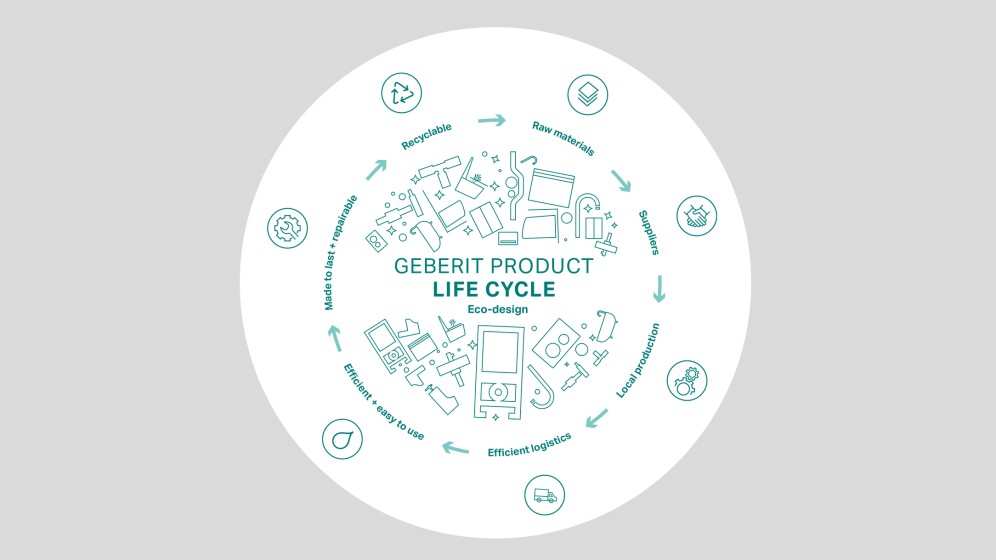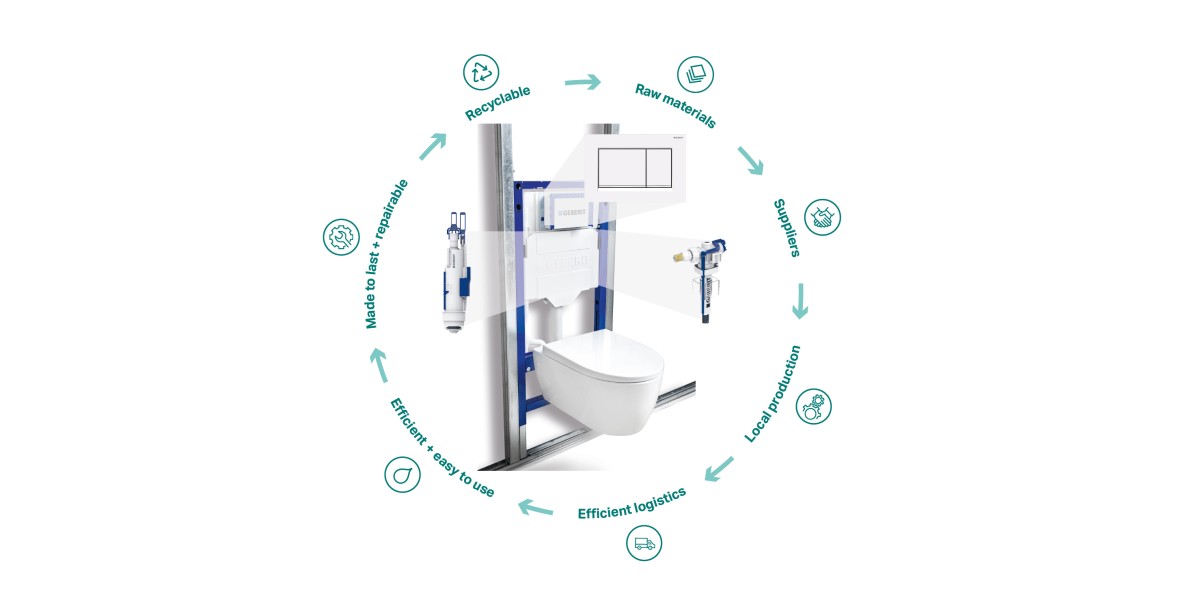Eco-design
Geberit has consistently applied the eco-design principle in the development of its products since 2007. The aim here is that every product should be ecologically better than its predecessor, without compromising on quality, functionality or durability.

The eco-design principle
Geberit has set itself the goal of creating added value for customers and society with its durable and resource-saving products. The key to this is eco-design. Since 2007, the company has been consistently developing its products on the basis that every product should be ecologically better than its predecessor, without compromising on quality, functionality or durability. All stages of the product life cycle are taken into consideration for this assessment, from raw material extraction to disposal.
This graphic illustrates the eco-design principle using the example of a typical Geberit product group: a WC system.

Durable products
Geberit products are typically used for decades. In fact, it is not uncommon for their service life to exceed 50 years, as is the case for plastic discharge pipes, for example. Geberit offers 50 years of spare parts availability for concealed cistern components (such as flush or fill valves) along with 25 years for a significant portion of the remaining range, which makes a decisive contribution to their long service life. The same applies to the commitment to backwards compatibility of new products. In this way, we make it easier for construction partners to fulfil the often extensive catalogue of requirements for certified construction projects.
Water-saving solutions
Geberit has a long tradition of manufacturing products that save water, especially WC cisterns and their associated components. According to a model calculation, the water consumption for flushing the toilet has been reduced by around 80% from 70 litres to 14 litres per person per day since 1952 thanks to Geberit’s dual flush and stop-and-go cisterns1.
Geberit is constantly developing the water efficiency of its WC systems. By combining water-efficient flushing systems with the 212 flush valve and WC ceramics featuring the latest-generation TurboFlush technology, it achieves a reduction in the required flush volume to just 2.6 litres for the partial flush and 4 litres for the full flush.
In public and semipublic areas, Geberit offers urinals with an electronic flush control that can be flushed clean with a minimum flush volume of 0.5 litres. The product range also includes completely waterless urinals. Geberit has developed a calculator to show customers the environmental impact, water consumption and costs of the various urinal systems.
The use of electronic taps can reduce water consumption by over 50 per cent compared to their conventional counterparts. Wall-mounted taps not only offer greater user convenience, but also allow for quick and easy cleaning, which cuts down on the consumption of water and cleaning agents further still. And when it comes to compliance with legal requirements and meeting individual customer needs, Geberit offers a diverse range of tap aerators that can be used to optimise water consumption.
1Assumptions: A person uses the toilet five times a day and actuates the large flush once and the small flush four times.
